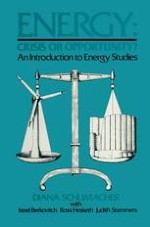1985 | OriginalPaper | Chapter
Conservation
Author : Diana Schumacher
Published in: Energy: Crisis or Opportunity?
Publisher: Macmillan Education UK
Included in: Professional Book Archive
Activate our intelligent search to find suitable subject content or patents.
Select sections of text to find matching patents with Artificial Intelligence. powered by
Select sections of text to find additional relevant content using AI-assisted search. powered by
Conservation was practised throughout history until the second half of the twentieth century. Most civilisations reclaimed, recycled and re-used materials. Old ships’ timbers were preserved to build houses and barns; rags were used in the paper industry; organic wastes were spread on the land as fertiliser. As industrialisation progressed with cheap and abundant energy and materials, conservationist habits were gradually abandoned in favour of manufacture using virgin raw materials. These were often imported relatively cheaply and avoided the more expensive labour costs incurred by reclaiming and sorting used materials before recycling. Increasingly too, as both social and industrial structures developed towards specialisation, they became more energy-intensive and the overall use of energy became more profligate and more prone to promoting wasteful practices. Also, after the 1950s accelerating changes in new product design and concepts such as built-in obsolescence to guarantee continuous markets for replacements were introduced to stimulate demand and increase production. The increasing throughput of materials, in turn, led to higher overall energy consumption, the creation of additional waste and further pressure on reserves. Before the 1973 oil crisis some people were becoming alarmed by these runaway trends in energy consumption and waste. Some of the ‘prophets of doom’ as they were then labelled, came from within the oil companies themselves but, on the whole, up to the 1970s such critics were associated with the antipollution or anti-industry movements.
